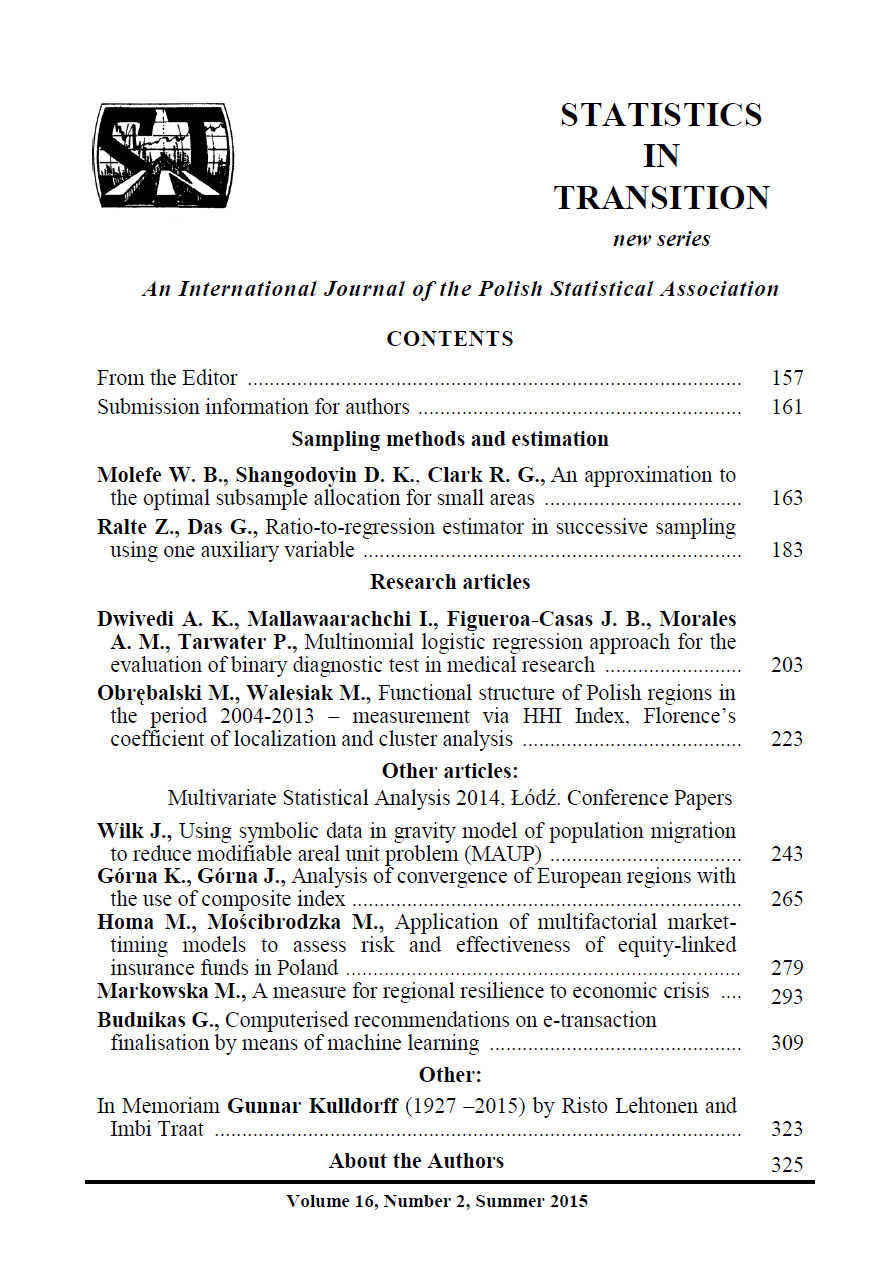ARTICLE
ABSTRACT
Nowadays a vast majority of businesses are supported or executed online. Website-to-user interaction is extremely important and user browsing activity on a website is becoming important to analyse. This paper is devoted to the research on user online behaviour and making computerised advices. Several problems and their solutions are discussed: to know user behaviour online pattern with respect to business objectives and estimate a possible highest impact on user online activity. The approach suggested in the paper uses the following techniques: Business Process Modelling for formalisation of user online activity; Google Analytics tracking code function for gathering statistical data about user online activities; Naive Bayes classifier and a feedforward neural network for a classification of online patterns of user behaviour as well as for an estimation of a website component that has the highest impact on a fulfilment of business objective by a user and which will be advised to be looked at. The technique is illustrated by an example.
KEYWORDS
online behaviour, Google Analytics, Naive Bayes classifier, artificial neural network.
REFERENCES
ANGELETOU, S., ROWE, M., ALANI, H., (2011). Modelling and Analysis of User Behaviour in Online Communities. The Semantic Web – ISWC 2011(pp. 35-50). Lecture Notes in Computer Science Volume 7031.
BUDNIKAS, G., (2015). Creation of user online behaviour analysis model for increase of an enterprise competitiveness. Rzeszów: In proceedings of VI Ogólnopolska Konferencja Naukowa „Społeczeństwo Informacyjne. Stan i kierunki rozwoju w świetle uwarunkowań regionalnych" (in press).
CLIFTON, B., (2012). Advanced Web Metrics with Google Analytics (3rd Edition ed.). Indianapolis: John Wiley & Sons.
DEMBCZYŃSKI, K., KOTŁOWSKI, W., SYDOW, M., (2009). Effective Prediction of Web User Behaviour with User-Level Models. Journal Fundamenta Informaticae, 89(2-3), 189-206.
DREJEWICZ, S., (2012). Zrozumieć BPMN. Modelowanie procesów biznesowych. Helion.
MULPURU, S., HULT, P., MCGOWAN, B., (2010, May 20). Understanding Shopping Cart Abandonment. Retrieved June 25, 2015, from https://www.forrester.com/Understanding+Shopping+Cart+Abandonment/fulltext/-/E-RES56827
NIKIFORAKIS, N., ACAR, G., SAELINGER, D., (2014). Browse at your own risk. Spectrum, IEEE, 51(8), 30-35.
ROBINSON, D. J. B. V., (2008). Online Behavioural Analysis and Modeling Methodology (OBAMM). Social Computing, Behavioural Modeling, and Prediction, 100-109.
RUSSELL, S. A., (2010). Artificial Intelligence: International Version: A Modern Approach (3 ed.). Pearson.
WHITE, R. W., CHU, W., HASSAN, A., HE, X., SONG, Y., WANG, H., (2013). Enhancing personalized search by mining and modeling task behavior. Proceedings of the 22nd International Conference on World Wide Web(pp. 1411–1420). ACM.
XIAN, X., CHEN, F., WANG, J., (2014). An Insight into Campus Network User Behavior Analysis Decision System. (pp. 537-540). Taichung: IEEE
